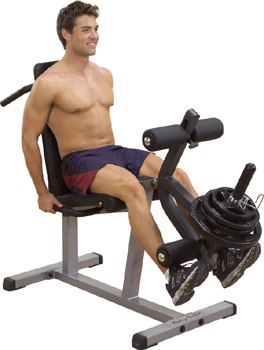Closed-Chain vs. Open-Chain Motion

I’ve gotten a few questions about when to use closed-chain training techniques in comparison to open-chain techniques. But first, for the reader, let’s define those terms:
- Open Kinetic Chain Exercise: An exercise in which the end of the limb being exercised is not in contact with any surface.
- Closed Kinetic Chain Exercise: An exercise in which the end of the limb being exercised is in contact with a surface.
Paul Chek describes it as such:
To simplify the terms, OPEN KINETIC CHAIN exercises are those exercises in
which the force applied by the body is great enough to overcome the
resistance. An example of an open chain exercise would be a bench press, or
any leg press which allows the force applied to move the load away from the
body.In contrast, CLOSED KINETIC CHAIN EXERCISES are those in which the force
applied is not great enough to overcome the resistance. Examples would be the
push-up and squat exercises. To clarify for the novice list reader, even
though the load applied during the squat is on the body, the force generated
is applied to the ground, not the bar. To move the bar, the lifter must apply
a force against the earth great enough to overcome the resistance created by
the load on the bar.
Some contrasting examples of both exercises include:
- Squat (closed) vs. Leg Press (open)
- Push-Up (closed) vs. Bench Press (open)
Now that we’ve figured it all out, let’s talk about when it’s a good idea to use both!
Open-Chain Exercises

In general, you should stay away from open-chain exercises in the lower body – specifically ones that are weighted. Leg extensions tend to produce shear stress in the joint (as compared to compressive force) that can seriously tax the ACL. These exercises can also create imbalances between the hamstrings and quads which can lead to future injury and/or decreased athletic performance.
However, open-chain exercises for the upper body tend to work very well for baseball athletes, particularly pitchers. The act of throwing a baseball is itself an open-chain movement where the pitching arm rotates extremely quickly around the glenohumeral joint and the ball is released at (hopefully!) high velocities. As such, training the upper body for mobility makes a lot of sense. Dumbbell bench pressing, lots of dumbbell rowing, and band work can all play a large role in the training program for the baseball pitcher. Try to stay away from the fixed pronated position that barbells put you in, however, as this is slightly contraindicated for overhead throwers. The neutral grip is much safer.
Closed-Chain Exercises
In comparison to open-chain movements, pitchers should stick to closed-chain movements in the lower body. This means squats and deadlifts over leg extensions and leg curls. The lower half in the pitching motion provides all the stability in the throw – the pitching side leg provides balance during the stride portion while the glove side leg needs to have a firm plant on the mound to give the hips and pelvis (and subsequently the shoulders) a solid foundation to rotate quickly on.
However, pitchers should tend to avoid heavy weighted upper body closed chain movements. At Driveline Baseball, we do a lot of chin-ups and pull-ups, as well as explosive push-up variants, but we don’t weigh down the athletes with heavy chains or bands while doing so. Remember, the goal of the upper body is to maintain mobility without getting too stiff (with some exceptions for athletes with crazy laxity).
Hopefully this gives you an idea of what the differences between the two types of kinetic chain exercises are and how to use them in your strength training program!
Comment section
Add a Comment
You must be logged in to post a comment.

James -
Why do some people consider the leg press a closed-chain exercise?